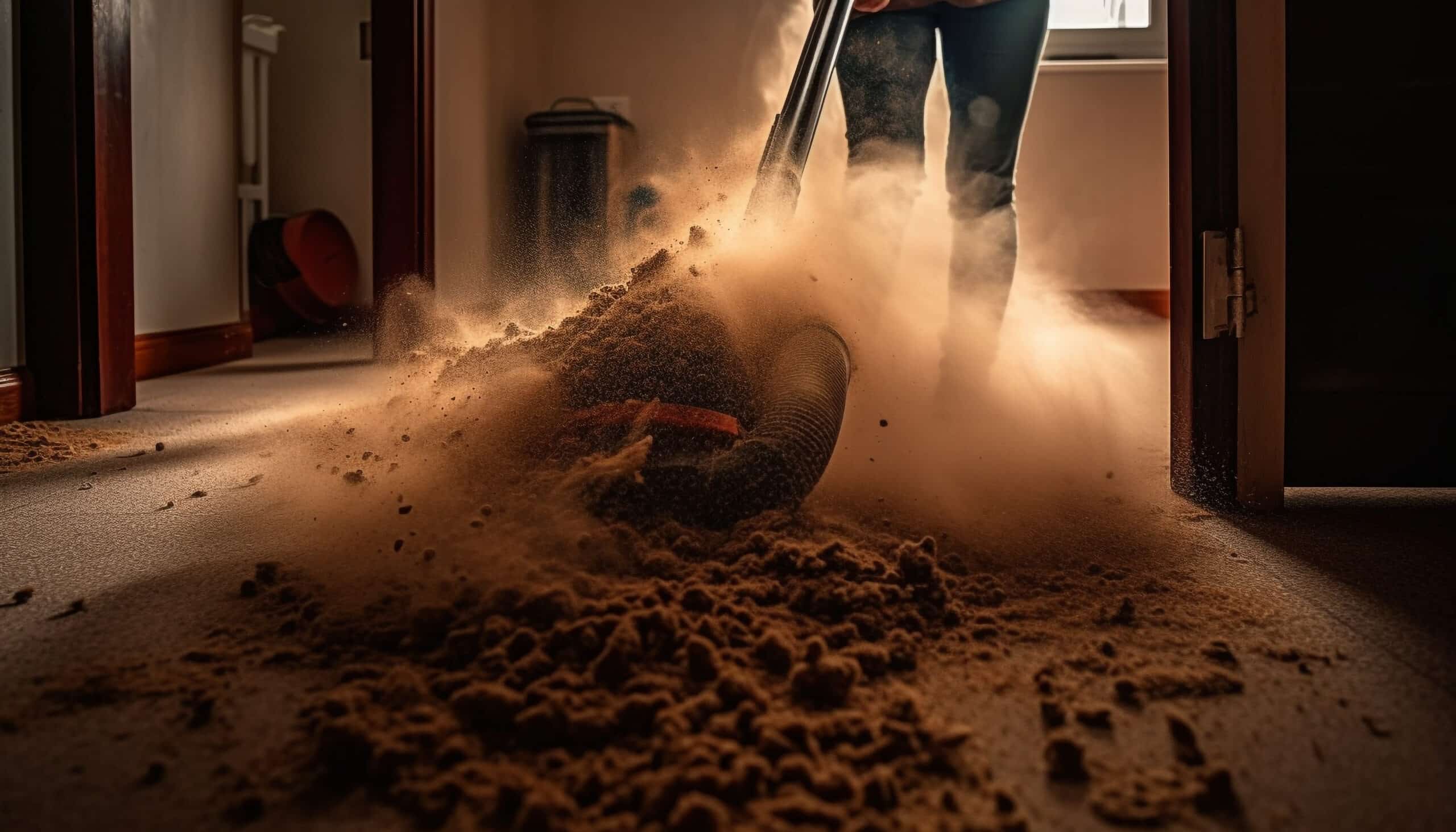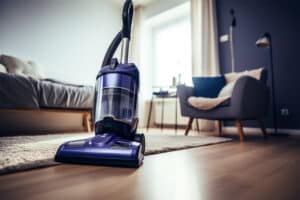How To Use Wet Vacuum Cleaner?
Key Takeaways
- Make sure the drum is empty: Before using the wet vacuum cleaner, ensure that the drum is empty. This will allow the vacuum to effectively collect the water or liquid without any obstructions.
- Choose the appropriate attachment: Different cleaning tasks require different attachments. Make sure to select the appropriate attachment for the specific cleaning task at hand. This will ensure optimum cleaning performance.
- Clean and maintain the vacuum: After each use, it is important to empty the bin and clean the wet vacuum thoroughly. This prevents the growth of mold and mildew and ensures the longevity of the vacuum.
Using a wet vacuum cleaner can be a highly effective way to clean up wet messes and spills. Whether you’re dealing with a flooded basement, a water leak, or simply need to clean up after a spill, knowing how to properly use a wet vacuum cleaner is essential. In this article, we will explore the best practices and step-by-step guides for using a wet vacuum cleaner effectively.
Best Practices for Using a Wet Vacuum Cleaner
Before we dive into the step-by-step guides, let’s take a look at some of the best practices for using a wet vacuum cleaner:
- Make sure the drum is empty: Before using the wet vacuum cleaner, ensure that the drum is empty. This will allow the vacuum to effectively collect the water or liquid without any obstructions.
- Choose the appropriate attachment: Different cleaning tasks require different attachments. Make sure to select the appropriate attachment for the specific cleaning task at hand. This will ensure optimum cleaning performance.
- Clean and maintain the vacuum: After each use, it is important to empty the bin and clean the wet vacuum thoroughly. This prevents the growth of mold and mildew and ensures the longevity of the vacuum.
- Store in a convenient location: To make the most out of your wet vacuum cleaner, store it in an easily accessible area. This will encourage frequent use and ensure quick response to any wet messes.
- Take advantage of additional features: Many wet vacuum cleaners come with additional features and functionalities. Explore these options to maximize the versatility and efficiency of your cleaning tasks.
Step-by-Step Guide for Using a Wet Vacuum Cleaner
Now, let’s delve into the detailed step-by-step guides on how to use a wet vacuum cleaner effectively:
Guide 1: Safe Home Advice
- Familiarize yourself with the wet vacuum cleaner: Before using the wet vacuum cleaner, familiarize yourself with its components and operation. Read the user manual for detailed instructions.
- Prepare the area and gather supplies: Clear the area of any obstacles and gather the necessary supplies such as extension cords, cleaning agents if required, and appropriate attachments.
- Plug in and test the wet vacuum cleaner: Plug the wet vacuum cleaner into a Ground Fault Circuit Interrupter (GFCI) outlet and test it to ensure it is functioning properly.
- Choose the right attachment: Select the appropriate attachment for the surface and type of mess. Use a wide nozzle or floor attachment for large, flat areas, a crevice tool for tight spaces, and a squeegee attachment for carpets and upholstery.
- Begin the wet vacuuming process: Start by removing any standing water using the appropriate attachment. Then, clean the surface by moving the attachment in overlapping passes.
- Empty the water tank regularly: Monitor the water level in the tank and empty it as needed to prevent overflow. This will ensure continuous and efficient cleaning.
- Clean and maintain the wet vacuum cleaner: After each use, clean or replace filters, wipe down the exterior, and empty the water tank. Regular maintenance will prolong the lifespan of your wet vacuum cleaner.
- Store in a clean and dry area: Once you have finished cleaning, store the wet vacuum cleaner in a clean and dry area to protect it from damage and ensure its longevity.
Guide 2: Vacmaster Guide
- Ensure the drum is empty: Before using the wet vacuum cleaner, make sure the drum is empty and remove the filter designed for dry surfaces.
- Select the appropriate attachment: Choose the attachment that best suits your cleaning task.
- Hold the nozzle in place: Hold the nozzle in place until it sucks up most of the water in each area.
- Empty the canister promptly: Empty the canister promptly when it becomes full to ensure continuous cleaning.
- Thoroughly clean the vacuum: After each use, clean the vacuum thoroughly, including the canister and attachments, to prevent the growth of mold and maintain its efficiency.
Conclusion
Using a wet vacuum cleaner properly can help you effectively clean up wet messes and spills. By following the best practices and step-by-step guides outlined in this article, you can ensure efficient cleaning and prolong the lifespan of your wet vacuum cleaner. Remember to always familiarize yourself with the specific model and its components, choose the appropriate attachment for each cleaning task, and clean and maintain the vacuum regularly. With these tips, you’ll be well-equipped to tackle any wet mess that comes your way.
Related Websites:
- How to Use a Wet/Dry Vac Properly – Reviewed
- How to Use Wet Vacuum Cleaner – Safe Home Advice
- How to Use a Wet Vacuum Cleaner – Vacmaster Guide
- How to Use a Vacuum Cleaner Wet and Dry: A Step-by-Step Guide – Experts in Vacuum
- How to Use a Wet/Dry Vac for Water – Gadget Review
- How to Use Wet Vacuum Cleaner – Storables
FAQs:
Q: What are the benefits of using a wet vacuum cleaner?
Using a wet vacuum cleaner offers several benefits. Firstly, it allows you to efficiently clean up liquid spills and messes, preventing potential damage to your floors or furniture. Additionally, wet vacuum cleaners often have powerful suction capabilities, making them effective at deep cleaning carpets and upholstery. They are also versatile and can be used on a variety of surfaces, including hard floors, rugs, and even car interiors.
Q: How does a wet vacuum cleaner differ from a traditional vacuum cleaner?
A wet vacuum cleaner differs from a traditional vacuum cleaner in that it is specifically designed to handle wet messes and liquids. Unlike traditional vacuums, wet vacuums have specialized features that allow them to safely and effectively clean up spills without causing damage or posing electrical hazards. They are equipped with waterproof components, such as sealed motors and containers, to handle liquids and prevent any accidents.
Q: What are the different types of wet vacuum cleaners available in the market?
There are several types of wet vacuum cleaners available in the market. Some common types include upright wet vacuums, canister wet vacuums, and handheld wet vacuums. Upright wet vacuums are similar to traditional upright vacuums but are designed for wet cleaning. Canister wet vacuums have a separate canister for holding the collected liquid, providing versatility and ease of use. Handheld wet vacuums are portable and compact, making them ideal for smaller spills and hard-to-reach areas.
Q: What safety precautions should I consider before using a wet vacuum cleaner?
Before using a wet vacuum cleaner, it is important to take some safety precautions. Firstly, ensure that the vacuum is unplugged before handling any parts or attachments. Make sure to read and follow the manufacturer’s instructions and guidelines. Avoid using the wet vacuum on live electrical circuits or near water sources. Additionally, use caution when handling liquids and be aware of any potential slip and fall hazards.
Q: How can I maximize the efficiency and effectiveness of my wet vacuum cleaner?
To maximize the efficiency and effectiveness of your wet vacuum cleaner, consider the following tips and best practices. Regularly clean and maintain the vacuum, including emptying and cleaning the collection tank. Use the appropriate attachments and accessories for different surfaces and cleaning tasks. Pre-treat stains or spots on carpets or upholstery before vacuuming. Follow the manufacturer’s recommendations for optimal performance. Lastly, practice proper cleaning techniques, such as overlapping vacuum strokes and allowing sufficient drying time after wet vacuuming.






